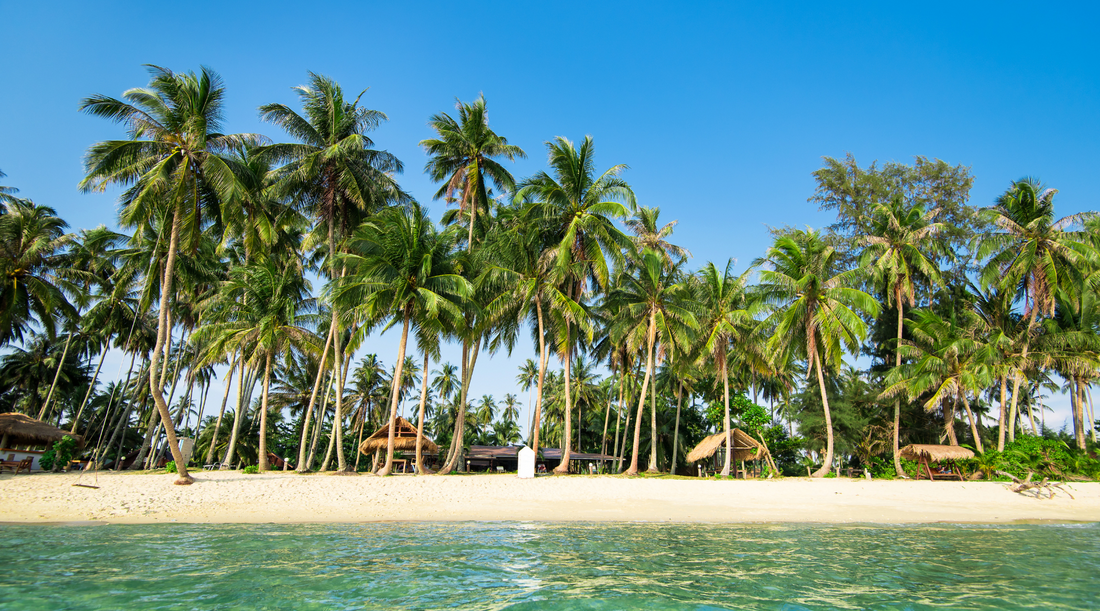The life cycle of a coconut tree (Cocos nucifera) stands as a testament to the intricate wonders of nature. These majestic palms, undergo a remarkable journey from germination to maturity, illustrating the complexity of biological natural processes and ecological interactions. In this exploration, we delve into the stages of the coconut tree's life, unraveling the secrets of its growth, reproduction, and eventual contribution to the ecosystem. From the humble beginnings of a seed buried in the soil to the towering tree bearing coconuts, each phase of its life unveils fascinating insights into adaptation, resilience, and the delicate balance of nature.
The life of a coconut tree starts with a single seed—the coconut—that falls from the mother tree and lodges itself in the soil. Germination marks the beginning as the seed absorbs water, softening its husk. Enzymes within the seed break down nutrients, fueling the emergence of a shoot. Through this process, a new life takes form, seeking sunlight and nourishment.
In the seedling stage, the young coconut plant develops its first true leaves, establishing a robust root system to absorb essential nutrients and water from the soil. Sensitivity to environmental factors such as sunlight, warmth, and moisture characterizes this stage, crucial for the plant's growth.
With maturity, the coconut tree enters the vegetative growth phase, focusing on leaf and stem development. Its canopy expands, capturing sunlight through lush, green leaves known as fronds. This phase spans several years and allows the tree to accumulate resources which prepare it for the next vital stage in its life cycle.
Around the age of 5 to 6 years, the coconut tree reaches reproductive maturity. It produces inflorescences, bearing both male and female flowers. While capable of self-pollination, coconut trees often rely on wind and insects for pollen transfer from tree to tree, leading to coconut formation. Upon successful pollination, female flowers transform into coconuts, gradually maturing from green to brown as seeds develop inside. The endosperm (white interior portion) nourishes the growing embryo within, ensuring its survival. Mature coconuts fall, guided by gravity or water, finding suitable spots for germination. The outer husk (coir) shields the seed during this journey, ensuring its safety. Subsequently, fallen seeds germinate, growing into new coconut trees and continuing the species' life cycle.
Typically, a healthy and well-cared-for coconut palm can live for an average of 60 to 70 years. Under favorable conditions, some coconut trees can extend their lifespan, continuing to bear fruit for several decades beyond this range. However, like all living organisms, coconut palms eventually face the inevitability of aging and natural decline. When a coconut palm reaches the end of its life cycle, it undergoes a gradual deterioration process. Fronds yellow and wither, and the tree's overall vitality diminishes. Eventually, the tree ceases to produce coconuts and its growth halts. In the ecosystem, the decaying palm becomes a valuable source of organic matter, providing nutrients to the surrounding plants and organisms. Nature ensures that every stage of the coconut palm's life, including its natural death, contributes to the balance and fertility of the environment it once thrived in.
In essence, the coconut tree's life cycle exemplifies nature's brilliance, highlighting adaptation, reproduction, and ecological balance. Understanding this scientific journey not only enhances our admiration for these majestic trees but also underscores the importance of preserving their habitats, ensuring the continuity of this remarkable life cycle for generations to come.

